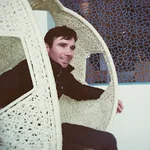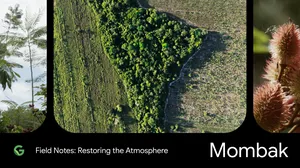Ecology at Google brings holistic design to our outdoor environments

Along the Southern edge of the San Francisco Bay, our headquarters sit at the intersection of Silicon Valley’s physical footprint and a diverse and increasingly fragile ecosystem. From an ecological standpoint, the area presents both unique challenges and singular opportunities. Federally protected Burrowing Owls call this area home, and Snowy and Great Egrets return every spring to raise their chicks in sycamore trees on our campus. Far above, the Pacific Flyway buzzes with migratory birds in search of once vast willow groves.
It’s with this in mind that our real estate and workplace services group launched the Ecology Program in 2014. The program seeks to incorporate the best available science into the design of Google’s outdoor spaces, create partnerships to support the implementation and growth of this science, and share programmatic resources publicly for all to use.
We’ve long been an industry leader in the design of healthy and sustainable indoor environments, but only recently have we formalized a science-based strategy to create and maintain healthy and resilient outdoor environments. Traditional landscape designs, while well-intentioned, don’t always implement data-driven strategies to promote diverse and enduring habitats—habitats that can withstand climate change, include drought-tolerant and native plantings, and support pollinators, birds and native biodiversity. To lay this foundation for our campus’ outdoor spaces, we’ve created resources for design teams and initiated efforts to “re-oak” Silicon Valley with native valley oaks, expand the footprint of vanishing willow groves, and create new habitat through projects such as Charleston East and the expansion of the Charleston Retention Basin.

The program also seeks to engage and enhance the experience of individual Googlers and local residents with interactive learning sessions and home planting guidance. During each of the last two springs, we’ve partnered with the Santa Clara Audubon Society to sponsor informational “Egret Office Hours” and birding tours for the public throughout our South Bay Campus.

From the onset, we’ve known that we can’t “go it alone” in implementing successful ecological initiatives. We partnered with the San Francisco Estuary Institute (SFEI) to create the Resilient Silicon Valley vision, a roadmap to guide ecological planning in the region. Through this partnership, we can engage with the regional community while providing a framework for a science-based approach to ecology that anyone can access. We also launched a small Resilient Silicon Valley Awards program in 2016, providing financial sponsorships to support 10 regional environmental organizations, creating a coalition to advance this shared Bay Area vision.
We see great potential to transform our local and regional landscapes through engagement and collaboration. While ecology and tech may not be obvious partners, science, data-driven analysis and transparency are the pillars that will guide meaningful and lasting change in the outdoor environments that we and so many others call home.






